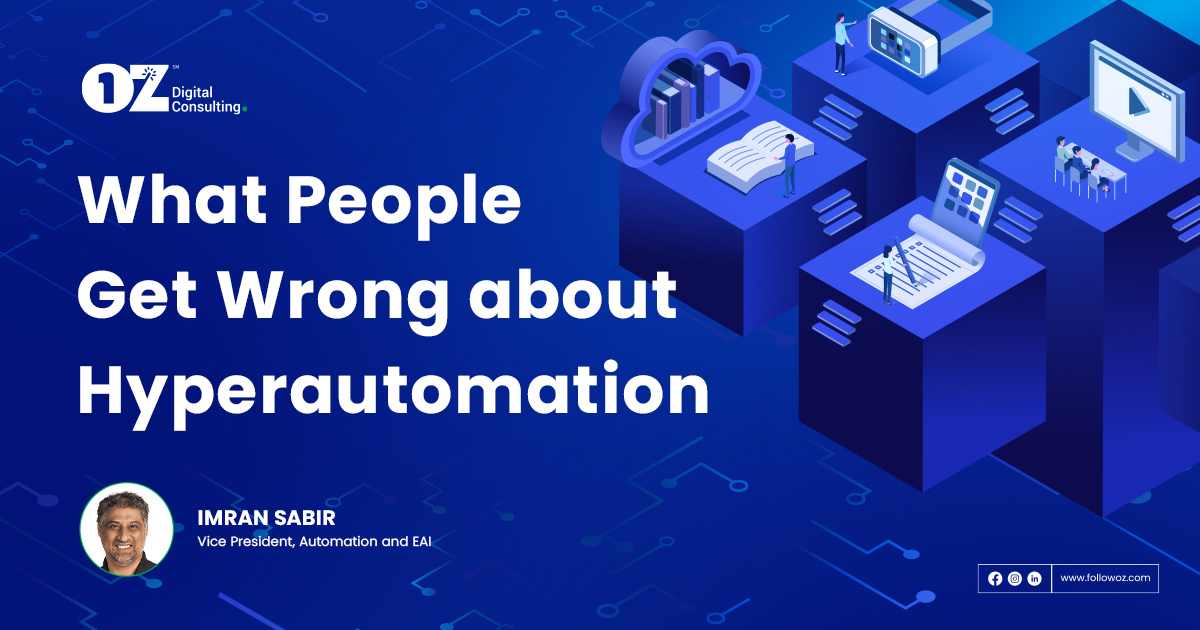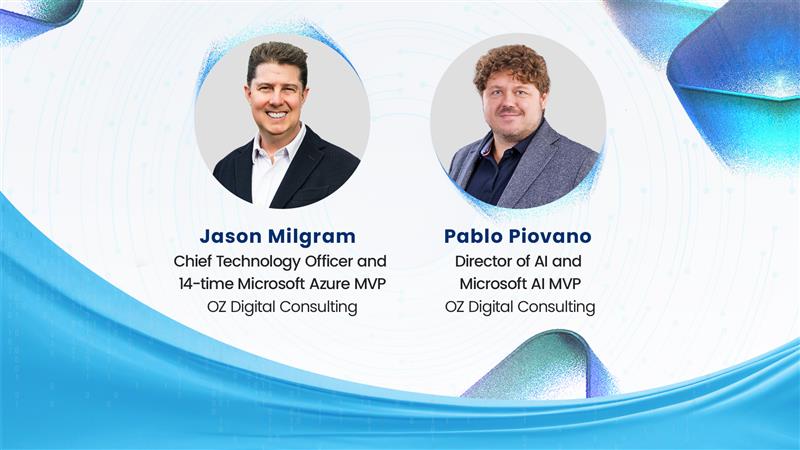— By Imran Sabir, Vice President, Automation and EAI
Hyperautomation is a term Gartner coined. Today, hyperautomation goes by many names and definitions. Forrester refers to it as “digital process automation.” IBM defines it as “the automation of everything in an organization that can be automated,” while others call it “intelligent process automation.”
Its wide-ranging definitions have led to several misconceptions about its scope and capabilities.
But at its core, according to Gartner, “hyperautomation is a business-driven, disciplined approach that organizations use to rapidly identify, vet, and automate as many business and IT processes as possible.”
It is a strategy for end-to-end automation built around intelligent automation and other cognitive technologies like intelligent business process management (iBPM), intelligent document processing (IDP), natural language processing (NLP), optical character recognition (OCR), chatbots, APIs, and low code.
In this blog, let’s debunk some of the most common myths surrounding hyperautomation.
Myth #1: Hyperautomation is only for large enterprises
Fact: Hyperautomation benefits all businesses—big and small
Hyperautomation is as relevant for small- and medium-sized organizations as it is for global enterprises because the goal of trying to automate as much as possible applies universally. While large enterprises often have the resources to adopt hyperautomation more readily, it’s not exclusive to them.
Smaller businesses can also benefit from implementing hyperautomation for specific tasks or processes with a more targeted approach. In fact, smaller businesses may have more to gain.
88% of SMBs say “automation allows them to compete with larger companies by allowing them to move faster, close leads quickly, spend less time on busywork, reduce errors and offer better customer service.” With hyper-automation, the potential to realize those benefits increases rapidly. Gartner expects organizations by the end of this year to lower operational costs by 30% through hyperautomation technologies and redesigned operational processes.
Myth #2: Hyperautomation eliminates all jobs
Fact: While hyperautomation automates tasks, it doesn’t eliminate all jobs.
While hyperautomation automates tasks, it doesn’t necessarily eliminate all jobs. Instead, it often shifts your staff’s focus from routine tasks to more strategic work. For example, in the insurance industry, the manual underwriting process can sometimes feel overwhelming: complex, highly repetitive, and time-consuming, impacting profitability and customer satisfaction. Through end-to-end automation, underwriters can evolve into what Deloitte calls the exponential underwriter—“a multi-skilled professional leveraging new data sources and emerging technologies to be more efficient and proactive in defining future organizational processes.” Hyperautomation empowers underwriters to become “exponential”— adding more value than ever. So, far from eradicating jobs, hyperautomation redefines work, empowering individuals to contribute meaningfully to organizational growth and their advancement.
Myth #3: Hyperautomation is a one-off project
Fact: Rather than a singular isolated project, hyperautomation is an ongoing, iterative process requiring constant optimization.
Hyperautomation is not a one-and-done process. It’s an ongoing continuous improvement process requiring maintenance, monitoring, and updating automation technologies to ensure they operate effectively.
As business processes evolve and priorities change, automation technologies must also change. Newer technologies may also emerge, which means you must continuously evaluate and improve your current systems to current and aligned with your organization’s changing needs.
Myth #4: Hyperautomation is a software tool.
Fact: Hyperautomation is a strategy for end-to-end automation that uses a range of software technologies
Hyperautomation is not a software tool or a strategy relegated only to IT departments. It’s a process that uses a range of technologies to automate business processes traditionally reserved for humans, benefitting every line of business across your organization. Marketing, sales, finance, and other departments can fully automate all their workflows to improve efficiency if they choose.
The range of tools falling under the hyperautomation umbrella includes:
- AI and machine learning (ML) for analyzing data and identifying automation opportunities.
- Low-code application platforms (LCAP) for non-technical staff to develop applications to automate business processes.
- Robotic process automation (RPA) for building, deploying, and managing processes or bots.
However, these technologies are of little significance if they’re not integrated effectively. Best practices involve auditing and documenting business processes to determine whether automation is feasible. Subsequently, appropriate technologies can be introduced to create seamless data flow between all your systems, applications, and devices for smarter operations.
Myth #5: Hyperautomation is solely about cost reduction.
Fact: Hyperautomation has broader implications.
While cost reduction is a potential benefit, hyperautomation offers broader advantages such as accuracy, consistency, and better customer experiences. It empowers organizations to become more data-driven, helping them stay competitive.
As hyperautomation takes hold in businesses, organizations are seeing benefits in several areas.
- Speed: This strategy employs existing operating data and IT infrastructure to achieve business outcomes at lower costs and greater speed and accuracy.
- Accuracy: Processes vast troves of data quickly and accurately without missing details or introducing errors into their systems.
- Process improvement: Provides more consistent and predictable results in a business process. By using AI to analyze operations and gaps, you can make informed business decisions and more thoughtful process improvements.
- Customer service: Through self-service tools, conversational AI, and chatbots, organizations can better serve their customers by providing faster and more accurate resolutions.
Next Steps
The potential of hyperautomation is huge. There’s more to it than streamlining tasks. When viewed as a business strategy rather than a technology approach, it encourages rapid product development and experimentation at lower operational costs, better operational efficiency, and more profitable growth. Hyperautomation shows you the easy ways of doing hard things that weren’t possible before.
Contact us today to learn more about how hyperautomation can help your business drive innovative solutions.
Download our e-book: Beyond the Bot: How AI is Powering the Next Wave of Automation for a more in-depth analysis.



